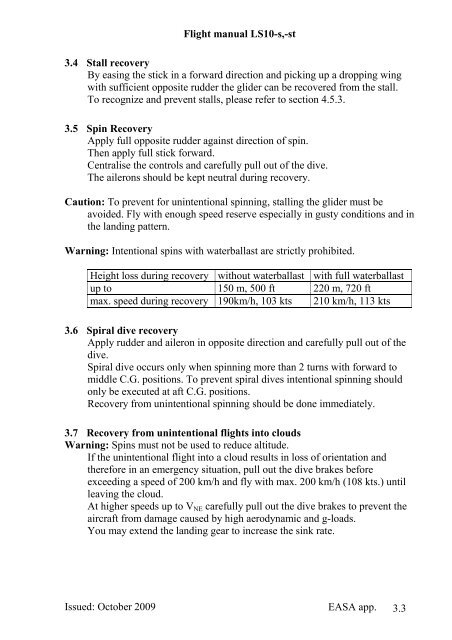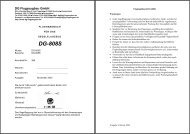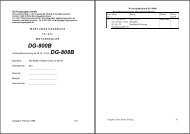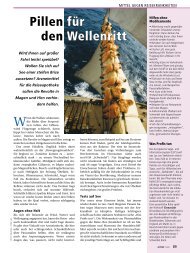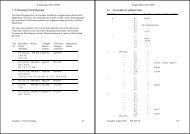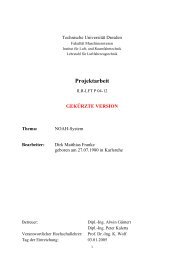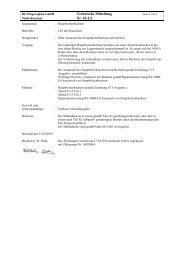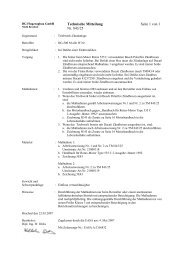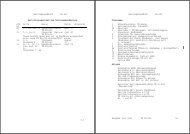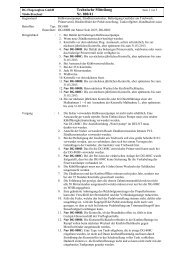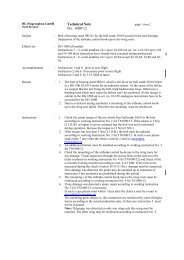LS10-s / LS10-st - DG Flugzeugbau
LS10-s / LS10-st - DG Flugzeugbau
LS10-s / LS10-st - DG Flugzeugbau
Create successful ePaper yourself
Turn your PDF publications into a flip-book with our unique Google optimized e-Paper software.
Flight manual <<strong>st</strong>rong>LS10</<strong>st</strong>rong>-s,-<strong>st</strong><br />
3.4 Stall recovery<br />
By easing the <strong>st</strong>ick in a forward direction and picking up a dropping wing<br />
with sufficient opposite rudder the glider can be recovered from the <strong>st</strong>all.<br />
To recognize and prevent <strong>st</strong>alls, please refer to section 4.5.3.<br />
3.5 Spin Recovery<br />
Apply full opposite rudder again<strong>st</strong> direction of spin.<br />
Then apply full <strong>st</strong>ick forward.<br />
Centralise the controls and carefully pull out of the dive.<br />
The ailerons should be kept neutral during recovery.<br />
Caution: To prevent for unintentional spinning, <strong>st</strong>alling the glider mu<strong>st</strong> be<br />
avoided. Fly with enough speed reserve especially in gu<strong>st</strong>y conditions and in<br />
the landing pattern.<br />
Warning: Intentional spins with waterballa<strong>st</strong> are <strong>st</strong>rictly prohibited.<br />
Height loss during recovery without waterballa<strong>st</strong> with full waterballa<strong>st</strong><br />
up to 150 m, 500 ft 220 m, 720 ft<br />
max. speed during recovery 190km/h, 103 kts 210 km/h, 113 kts<br />
3.6 Spiral dive recovery<br />
Apply rudder and aileron in opposite direction and carefully pull out of the<br />
dive.<br />
Spiral dive occurs only when spinning more than 2 turns with forward to<br />
middle C.G. positions. To prevent spiral dives intentional spinning should<br />
only be executed at aft C.G. positions.<br />
Recovery from unintentional spinning should be done immediately.<br />
3.7 Recovery from unintentional flights into clouds<br />
Warning: Spins mu<strong>st</strong> not be used to reduce altitude.<br />
If the unintentional flight into a cloud results in loss of orientation and<br />
therefore in an emergency situation, pull out the dive brakes before<br />
exceeding a speed of 200 km/h and fly with max. 200 km/h (108 kts.) until<br />
leaving the cloud.<br />
At higher speeds up to VNE carefully pull out the dive brakes to prevent the<br />
aircraft from damage caused by high aerodynamic and g-loads.<br />
You may extend the landing gear to increase the sink rate.<br />
Issued: October 2009 EASA app. 3.3


